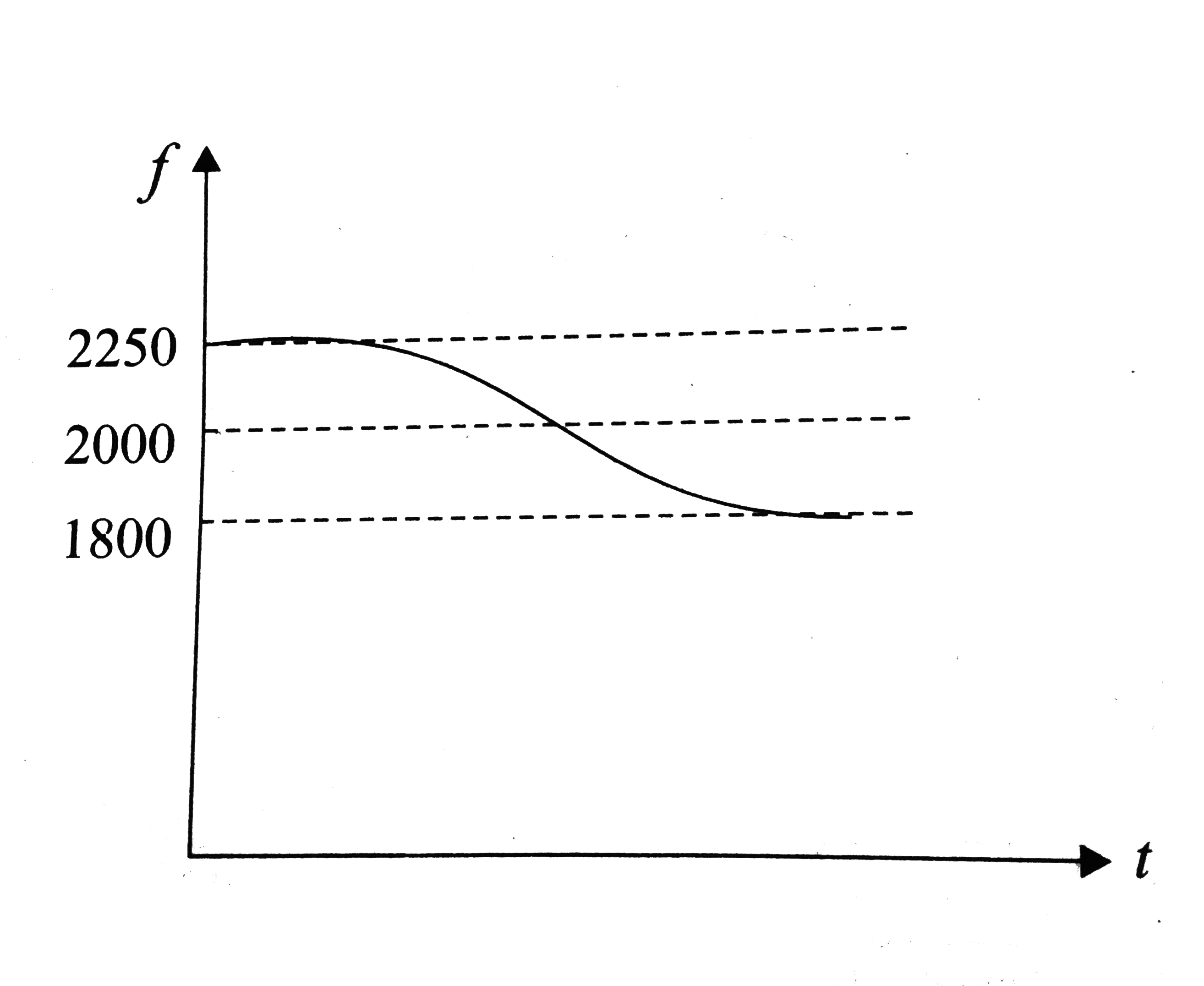Consider a source of sound S and an observer P. The sound source is of frequency n0. The frequency observed be P is found to be n1 if P approaches S at speed v and S is stationary, n2 If S approaches P at a speed v and P is stationary and n3 if each of P and S has speed v2 towards one another Now.
n1=n2=n3
n1<n2
n3>n0
n3 lies between n1 and n2
The correct Answer is:B, C, D
When observer P approaches the statinary source at speed v.
n1=V+nV×n0 .(i)
(V is speed of sound)
When source S approaches the stationary observer P at speed v
n2=VV−v×n0 ..(ii)
Thus, n2>n1, i.e., choice (b) is correct when both S and P approach each other with speed v2
n3=V+(v2)V−(v2)n0 .(iii)
Hence n3>n0 and n3 lies between n1 and n2.
Topper's Solved these Questions
- SOUND WAVES AND DOPPLER EFFECTBOOK - CENGAGE PHYSICS ENGLISHCHAPTER - SOUND WAVES AND DOPPLER EFFECTEXERCISE - Assertion-Reasoning
24 Videos
- SOUND WAVES AND DOPPLER EFFECTBOOK - CENGAGE PHYSICS ENGLISHCHAPTER - SOUND WAVES AND DOPPLER EFFECTEXERCISE - Comprehension
144 Videos
- SOUND WAVES AND DOPPLER EFFECTBOOK - CENGAGE PHYSICS ENGLISHCHAPTER - SOUND WAVES AND DOPPLER EFFECTEXERCISE - Single Correct
252 Videos
- RIGID BODY DYNAMICS 2BOOK - CENGAGE PHYSICS ENGLISHCHAPTER - RIGID BODY DYNAMICS 2EXERCISE - Interger
2 Videos
- SUPERPOSITION AND STANDING WAVESBOOK - CENGAGE PHYSICS ENGLISHCHAPTER - SUPERPOSITION AND STANDING WAVESEXERCISE - Comprehension Type
5 Videos
Similar Questions
Consider a source of sound S, and an observer P. The source emits sound of frequency N0. The frequency observed by P is found to be N1 if P approaches S at a speed v and S is stationary; N2 if S approaches P at a speed v and P is stationary and N3 if each of P and S has speed v/2 towards one another
View SolutionConsider a souce of sound S, and an observer/detector D. The source emits a sound wave of frequency f0. The frequency observed by D is found to be (i) f1, if D approaches S and S is stationary
(ii) f2, if S approaches S and S is stationary
(iii) f3,if both S and D and D is stationary Speed
In all three cases, relative velocity of S wrt D is the same. For this situation which is incorrect?
View Solution
Knowledge Check
A sound source is moving towards a stationary observer with 1/10 of the speed of sound. The ratio of apparent to real frequency is
A109B(109)2C(1110)2D1110
a bus is moving towards and stationary observer with speed 20 m/s blows a horn of frequency 200 Hz. the frequency of sound heard by the observer is approximately ( take speed of sound 320 m/s)
View SolutionA source of sound is travelling towards a stationary observer. The frequency of sound heard by the observer is 25% more that the actual frequency. If the speed of sound is v, that of the source is
View SolutionA source of sound of frequency 500 Hz is moving towards an observer with velocity 30 m/s . The speed of sound is 330 m/s . the frequency heard by the observer will be
View SolutionAn observer moves on the same line on which two sources of sound of frequency 660Hz are present. The observer observes beat frequency of 10Hz. If speed of sound is 300m/s then speed of the observer is:
View Solution
A statinary observer receives a sound of frequency 2000 Hz. The variation of apparent frequency and time is shown. Find the speed of source, if velocity of sound is 300ms
View Solutionwhen a source is going away from a stationary observer with the velocity equal to that of sound in air , then the frequency heard by observer is n times the original frequency . The value of n is
View Solutionwhen a source of sound of frequency f crosses stationary observer with a speed vs(<< speed of sound v) , the apparent change in frequency Δf is given by
View Solution
